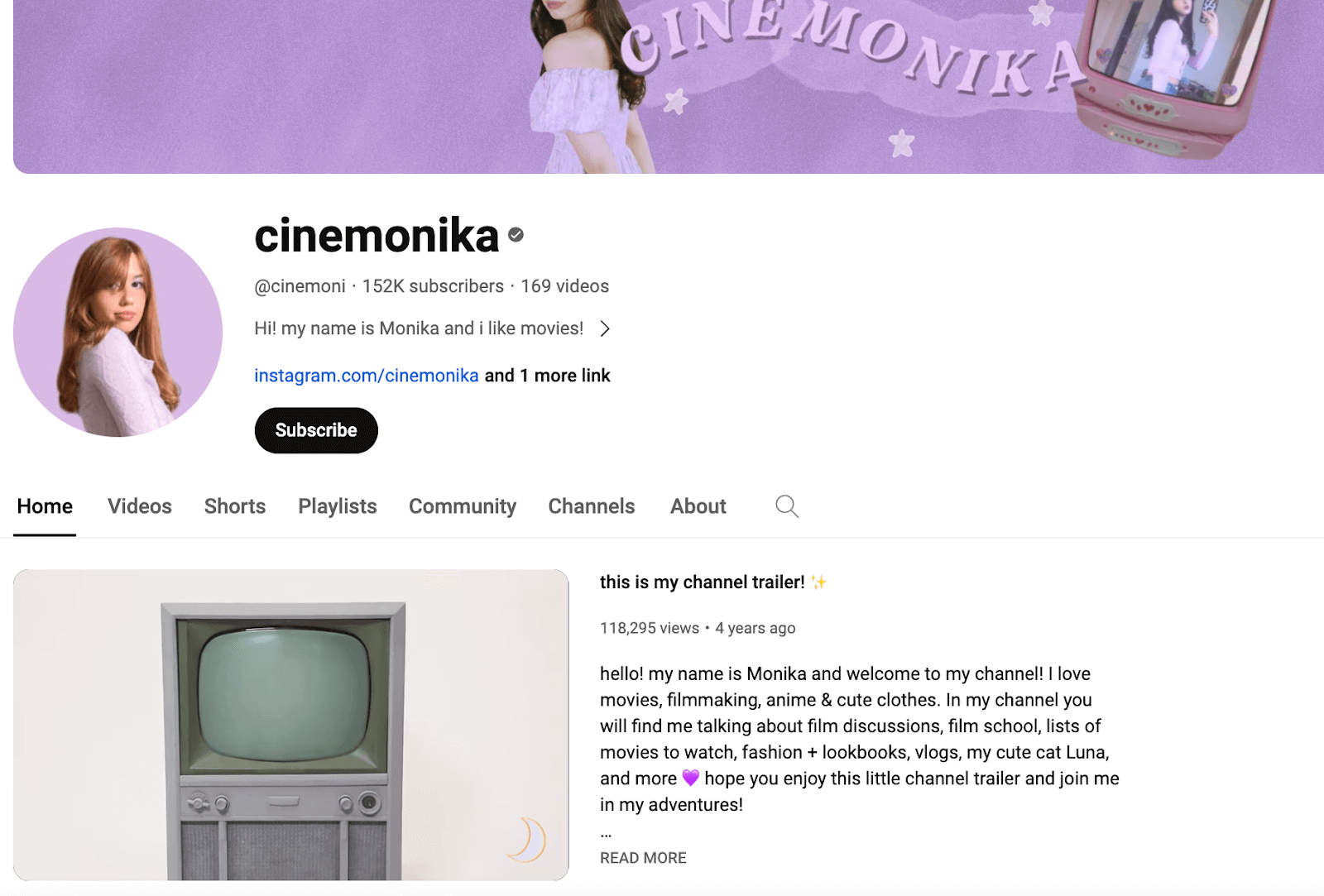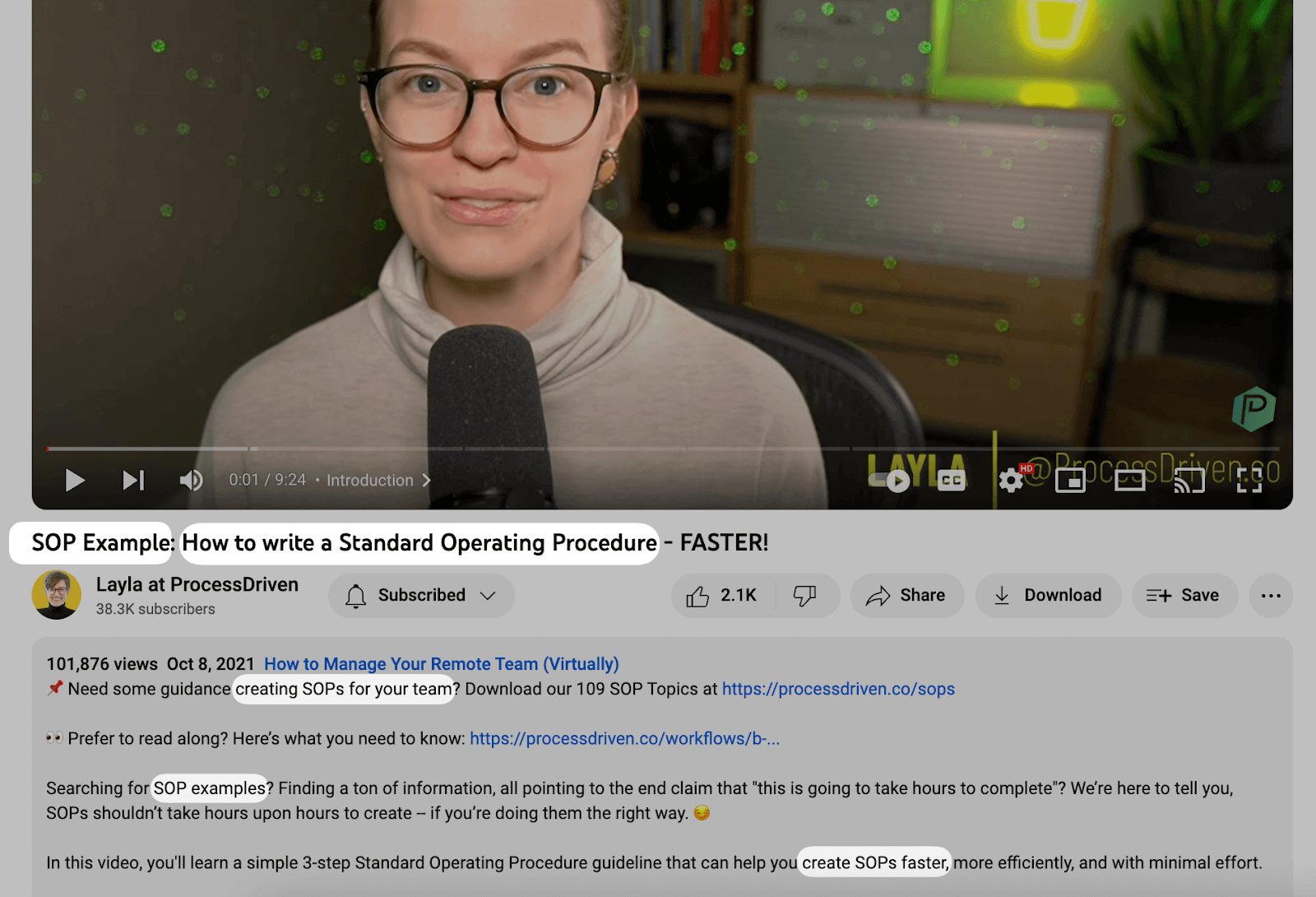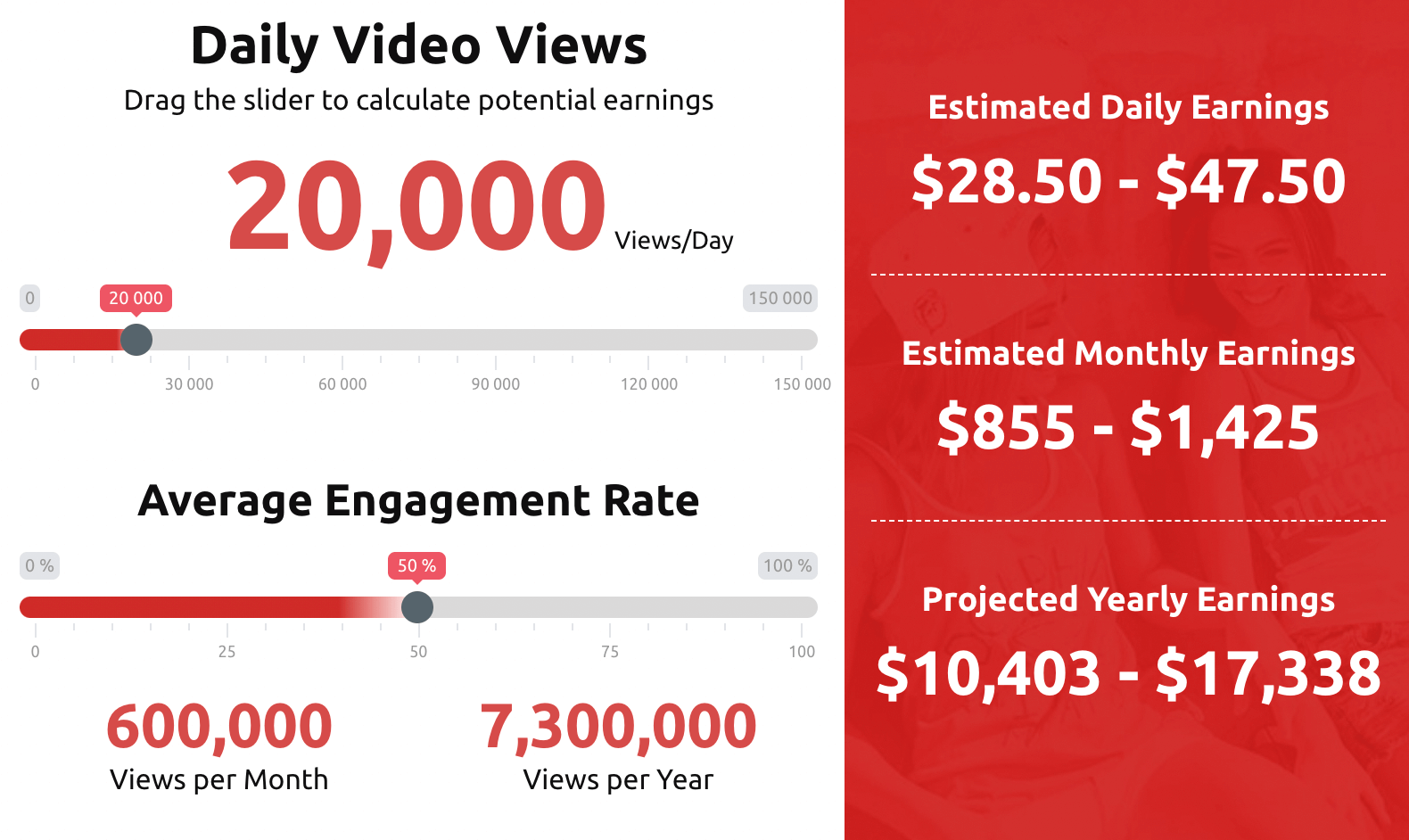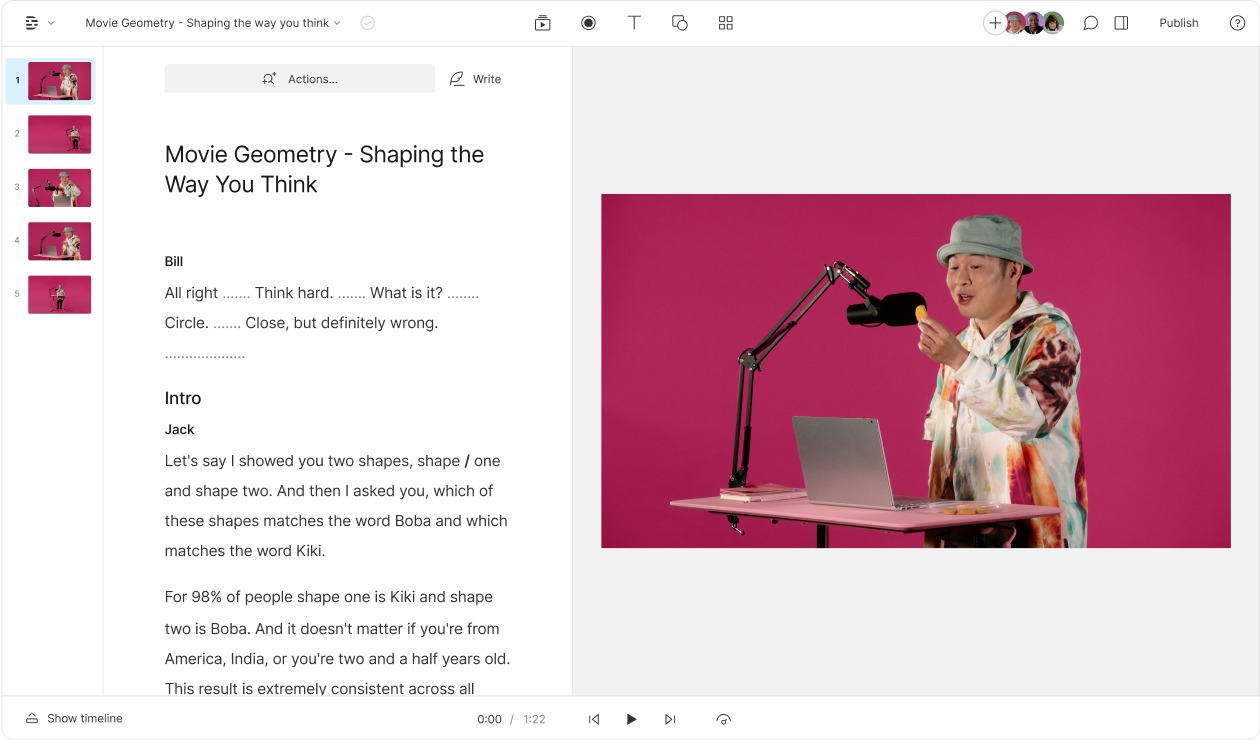What type of content do you primarily create?




MrBeast makes $54 million a year posting videos online. Suddenly, those kids saying they want to be YouTubers when they grow up don't sound so crazy after all.
Becoming a YouTuber isn't just a legitimate career path—it's a multi-billion dollar industry where creators with a smartphone and decent Wi-Fi can potentially reach audiences larger than primetime TV shows.
The appeal is obvious: creative control, flexible hours, no commute, and the distant-but-real possibility of making life-changing money doing something you actually enjoy.
Here's the part most guides won't tell you: for every MrBeast, there are millions of channels that never break 1,000 subscribers. Building a YouTube career is more like becoming a professional athlete than finding a job—possible, but with odds that should make you pause.
If you're still reading, you're either refreshingly stubborn or genuinely passionate—both good traits for a YouTuber. This guide breaks down how to actually become a YouTuber who gets paid, without the empty promises or sugarcoating.
What is a YouTuber? Definition and overview
A YouTuber is someone who earns money by creating and sharing videos on their own YouTube channel. This channel can be personal—such as Shane Dawson, one of the earliest YouTubers to gain fame—or built around a brand persona, like MrBeast, a hugely popular YouTuber with over 369 million subscribers, a successful chocolate bar brand, and a chain of burger restaurants.
YouTubers need a diverse skill set to build a successful channel and turn content creation into a full-time career. Essential skills include video editing, storytelling, resilience to criticism, and strong communication—crucial not only for engaging with subscribers but also for negotiating brand deals and securing sponsorships.
Detailed monetization requirements
The YouTube Partner Program is the primary way for most YouTubers to monetize their content. To qualify, creators need to meet two key thresholds: 1,000 subscribers and 4,000 public watch hours within the past 12 months. Understanding these requirements is crucial for setting realistic goals. Additionally, the program now allows alternative paths to monetization, such as those based on Shorts views. For more insights, you can refer to this guide.
How much do YouTubers make? Income breakdown
The average YouTuber earns around $4,600 per month, but earnings vary widely based on niche, audience size, and monetization strategies.
However, there is no fixed income rate for YouTubers. Earnings depend on factors like audience engagement, video views, subscriber count, and the monetization methods used, such as ad revenue, sponsorships, and memberships.
YouTubers can earn money through various revenue streams. The most common include YouTube's Partner Program (which requires at least 1,000 subscribers and 4,000 watch hours in the past 12 months), affiliate marketing, brand sponsorships, and selling merchandise.
Read more: How to make money on YouTube: 16 expert tips
Earnings breakdown by niche
Earnings on YouTube can vary significantly depending on your niche. Channels in finance and technology often earn higher CPMs compared to lifestyle or entertainment content. Here’s a rough breakdown:
- Finance & Tech: Higher CPMs, often around $2-$5 per 1,000 views.
- Entertainment & Lifestyle: Lower CPMs, typically $0.50-$2 per 1,000 views.
Understanding your niche helps set realistic income expectations. For a deeper dive, visit this resource.
How to become a YouTuber in 11 simple steps
- Define your niche and target audience
- Create a YouTube channel
- Plan your content schedule
- Invest in equipment and software
- Create high-quality videos
- SEO and video description
- Optimize video titles and thumbnails
- Engage with your audience
- Promote your YouTube videos
- Monitor YouTube analytics
- Monetize and grow your channel
1. Define your niche and target audience
Becoming a YouTuber is equivalent to starting your own business. Before you can monetize your channel, you need a solid understanding of the type of person you're trying to reach—including the products or services they buy and the brands they purchase from.
Questions to answer include:
- Who are the most popular YouTubers in your niche?
- What products or services do your target audience tend to buy through YouTube?
- What brands exist to serve the same target market?
You can find most of this information through publicly available data on sites like Statista or the Bureau of Labor Statistics. Or, look at popular YouTubers already working in your niche and browse through their videos to find the products they recommend (you'll see branded collaborations are labeled “ad” or “sponsored”).
- “Having such a wide range of topics on your channel can confuse YouTube's algorithm and make it difficult for YouTube to push your video to the right audience. Since having a more niche specific focus on my channel, my views have increased dramatically.” —Eric Slemboski, creator of Streamers Playbook
Don't underestimate the power of surveying your own audience, especially if you have an engaged following on platforms like Instagram or TikTok. These followers already trust your content—an essential factor in building a loyal YouTube audience and increasing monetization opportunities.
2. Create a YouTube channel
This might sound obvious, but in order to become a YouTuber, you'll need to open a YouTube account. Don't worry, it's free. To create yours:
- Sign into YouTube using a Google account
- Click your profile icon and select Create a channel
- Upload a profile photo and create a channel name
Once your channel is created, verify it to unlock features like live streaming, custom thumbnails, and the ability to upload videos longer than 15 minutes. To do this, go to YouTube Studio, navigate to 'Settings,' and find the 'Feature eligibility' tab. Then, verify your phone number under 'Intermediate features.'
Note about handles: When you create your channel (especially on mobile), YouTube may automatically assign a handle if your chosen channel name can’t be converted. Don’t sweat it. You can view and edit your handle anytime by heading to YouTube Studio or going to youtube.com/handle.
Once your channel is verified, consider whether you want it under your personal Google Account or a Brand Account. Using a Brand Account lets you create a channel with a business or other name that can have multiple managers or owners, making it easier if you’re collaborating, running a company, or working with a team. You can learn more about this option here.
Finally, customize your new channel so that first-time visitors know what to expect. Pay attention to:
- Your YouTube banner. Also known as channel art, this is the banner people see when landing on your YouTube channel. Find free templates on sites like Canva and choose a style that's consistent with your theme or brand.
- Your channel trailer. This short video introduces new subscribers to your YouTube channel. If you don't already have a backlog of videos to repurpose and tease in your channel trailer, record a short introduction about yourself. Tell subscribers what to expect from your channel, how often you post, and why they should subscribe.
 |
3. Plan your content schedule
Once your YouTube channel is up and running, you'll need some content to share with your first subscribers.
Avoid posting videos sporadically. Instead, establish a consistent upload schedule—whether it's weekly or biweekly—to set audience expectations and maintain steady growth. A content calendar can help you plan ahead and avoid burnout.
Take it from YouTuber Louise Henry who says: “The major thing I wish I had done differently in the early days would be to take it more seriously from day one.
“In the beginning, I wasn't consistent with my videos. At the time, I didn't fully understand the potential of YouTube, and I didn't really believe that I could be successful, so I didn't invest 100% of my energy. I'd take occasional breaks from sharing videos and lost a lot of valuable momentum.”
Start by committing to a regular content schedule. One new video per week is a good starting point. But the more you can post, the more chances you have at attracting new subscribers.
Unsure what kinds of videos to post? Find inspiration and start the content creation process by doing the following:
- Browse YouTube search trends to see what your target audience is actively searching for in order to spark video ideas
- Repurpose existing content, such as podcast episodes
- Lurk social media to find out what people in your niche are wondering about, talking about, or asking about
- Browse competitor channels to see what videos are doing well, and think of ways you can put your own spin on them
- Brainstorm a list of questions you had or mistakes you made when you were starting out, and use them as a springboard for video ideas
Project management tools like Trello and Asana can help you stay on track. Alternatively, calendar apps like Google Calendar provide an easy way to plan your YouTube content schedule, ensuring you maintain a consistent posting cadence.
 |
4. Invest in equipment and software
New YouTubers often make the mistake of investing thousands of dollars in a professional studio setup before earning any income. Instead, start with what you have—modern smartphones come equipped with high-quality cameras and microphones that are more than sufficient for beginner YouTubers.
The reality is: modern smartphones are equipped with high-quality cameras and microphones you can use to become a YouTuber, especially if you're a vlogger that records their daily life. A fancy DSLR camera complete with all the bells and whistles is an investment you can make when you're certain that YouTube will become a paid career.
Create a YouTube studio with the essential equipment and software needed to produce high-quality videos. At a minimum, this includes a good microphone, proper lighting, and video editing software like Descript to enhance and refine your content.
- A camera—whether that's an iPhone or a DSLR
- A microphone
- A tripod or mount to keep both your camera and microphone still
- A lighting source—be that a large window or ring light
- Video editing software like Descript
5. Create high-quality videos
The standard for video content is high. With so many options to choose from (and 4K quality now being seen as the norm), the editing stage is one of the most important elements of the entire YouTube video production process.
It's unlikely that the first video you film will be your best. Video production is like any other skill. The more you practice, the easier and more professional your videos look.
That said, professional video editing software like Descript can speed up the learning process. Rather than working from a complicated timeline, Descript lets you edit video from a transcript—delete the text, and it'll delete that section from the video. The app also has stock video and music, tons of templates, and AI-powered tools like Studio Sound and Green Screen, making it super easy to create high-quality videos at home—even without a professional studio to record in.
6. Optimize SEO and video descriptions
YouTube operates as a search engine, not just a social media platform. When users search for content, YouTube's algorithm ranks videos based on relevance, engagement, and watch time.
YouTube search engine optimization (SEO) is a strategy that increases the odds of your content appearing in YouTube's 3 billion yearly searches. Prove to the algorithm that your video content is the best result for your target audience's query by:
- Renaming your video files with a descriptive keyword
- Adding the keyword in your video title and description
- Using hashtags related to your video
- Assigning a video category
Layla at Process Driven is one YouTuber who puts this SEO strategy into practice. For this video on creating a standard operating procedure, Layla includes the keywords “SOP example,” “how to create a standard operating procedure,” and “create SOP” in the video's title and description.
 |
7. Create compelling titles and thumbnails
Click-through rates prove to YouTube that your video is relevant to the query—so much so that users have chosen your content over the other 10 videos displayed in the results page. Remember: the more views you get, the more chance you have at acquiring new subscribers, monetizing your channel, and becoming a successful YouTuber.
There are two major factors people consider when deciding whether to click a YouTube video:
- The video title. Include the main keyword someone would search to find your video. Optimize for click-throughs by creating a sense of intrigue or curiosity in video titles. Göran Winblad, for example, uses the title “This Is Why They All Hate Running” for a video on how to enjoy the sport.
- The YouTube thumbnail. The icon for your video is one of the largest elements in YouTube search results. Use yours to grab the attention of a viewer. Using the same example: Göran Winblad shows an image of someone running with the words “beginner mistake” overlaid on top.
 |
8. Engage with your audience
The YouTube algorithm prioritizes videos with high engagement and watch time. A strong retention rate signals that viewers find your content valuable and encourages YouTube to recommend your videos to a broader audience.
Similarly, engaging with subscribers can strengthen the relationship you have with them. They'll feel connected with you and have a reason to come back to your channel—feeling like a virtual friend rather than someone they simply watch for entertainment.
Simple strategies to engage your audience include:
- Hosting giveaways or competitions
- Asking a question in your video and prompting people to answer in the comments
- Creating playlists that automatically play the next video immediately after one finishes
“Interacting with your audience in the comments is something that I find is really helpful for growing my audience,” says Danielle Hu, founder of The Wanderlover. “Interaction and engagement help me to get closer to my online community. It shows that I will do my best to answer questions, which increases the chances of gaining more followers as I like to engage with people.”
Regardless of what you're asking viewers to do, add a call-to-action at the end of your video (either through spoken word or YouTube end cards). These tell people to stay engaged with your YouTube channel when they'd otherwise click off and watch another content creator.
9. Promote your YouTube videos
YouTube's algorithm is a great way to start building an audience. But it can take time to see the results—SEO is a compounding strategy that can take months to bear fruit.
Bump up your subscriber count by engaging with people outside of the YouTube platform. If you've already got a large Instagram following, for example, use Descript to create mini snippets of your full-length video. Use these as teasers; if someone wants to watch the entire video, they'll have to view it on YouTube. (The video's end card then encourages them to subscribe.)
Or, if you're a podcaster, share your episodes on platforms like Apple Podcasts and Spotify. Before each episode, tell listeners they can get a better experience by watching the corresponding video on your YouTube channel.
10. Monitor YouTube Analytics
Successful YouTubers know exactly what makes their audience tick. If you're starting from scratch with no existing audience to ask, the simplest way to do this is by consulting your YouTube data.
YouTube Analytics is the platform's built-in data tool designed to show you how people engage with your videos. When evaluating your analytics, pay especially close attention to the following metrics:
- Top videos: The most-viewed video on your channel during a reporting period.
- Impressions click-through rate (CTR): The percentage of people who saw your video's thumbnail and chose to click it.
- Average view duration: How long people watched your video before leaving.
- Traffic sources: Where people discover your videos (such as keyword searches, playlists, or suggested videos).
- Top YouTube search terms: The phrases people are using most often to find your videos.
Keep tabs on your YouTube analytics to spot trends before they hit the public eye.
Let's put that into practice and say you're a beauty YouTuber. Views on your “how to create a smokey eye” video declined over the month, but views on your “no makeup makeup” video skyrocket by 400%. This is a clear signal your audience prefers natural makeup looks.
By prioritizing that type of content over the next month, you'll create videos you know engage your audience—rather than risking that relationship with guesswork.
- “In the early days, I wish I had paid more attention to what my viewers liked and wanted. Instead, I kept making videos without really understanding what worked best. Now, I know how important it is to listen to my audience and create content that they are asking for.” —Dilpreet Johal, creator of SDET Unicorns
11. Monetize and grow your channel
You've got your content career off to a flying start. But to make it a sustainable career path, a successful YouTube channel needs to generate some revenue.
If you're wondering how to make money on YouTube, common income sources include ad revenue, channel memberships, brand sponsorships, affiliate marketing, and selling digital or physical products.
- Brand sponsorships. YouTube is the second most popular influencer marketing channel because YouTube creators have a strong relationship with their audience. Collaborate with brands that serve the same target market as you and earn money by mentioning their products in your videos—be that through a mini tutorial or a shopping haul.
- Affiliate marketing. Similar to brand collaborations, affiliate marketing works when you promote a brand's products on your channel. The only difference is you don't get an upfront sum. Affiliates earn a percentage of each sale you influence (usually between 5% and 30% commission).
- Sell products or services. Some YouTubers earn money by selling services like writing, design, or marketing on the side. You could also sell physical products like merchandise, or digital products like eBooks or online courses.
“From my YouTube channel, I earn between $100 and $200 each month with 10k subscribers,” says Dilpreet Johal, creator of SDET Unicorns. “However, the real success came when I started building courses related to the software testing field. This has been bringing in a steady income of over $2,000 per month.”
- Video ads. The YouTube Partner Program allows YouTubers to get paid when they show ads throughout their videos. You'll need at least 1,000 subscribers and 4,000 watch hours in the last 12 months (or 10 million valid public Shorts views in the past 90 days) to qualify for the Partner Program. Once accepted, you can expect to earn around $18 in ad revenue per 1,000 video views.
- Tips or pledges. This isn't most Youtubers' main source of income, but tips can supplement what you're making from other sources. Platforms like Patreon and Buy Me A Coffee entice subscribers to leave a tip in exchange for exclusive, quality content—such as a behind-the-scenes tour of your studio or subscriber-only live streams.
Influencer Marketing Hub has a fantastic resource that allows YouTubers to estimate their revenue. Just enter your daily video views and average engagement rate and the tool will show your estimated daily, monthly, or yearly earnings.
 |
Best video editing software for YouTubers
The quality of your videos can make or break your success as a YouTuber. With Descript, you don't have to risk it.
We think Descript is the best video editing software for YouTubers. With it, you can:
- Cut and trim your YouTube videos to make them extra engaging
- Fix mistakes in your video with an AI clone of your voice using Overdub
- Speed up the editing process by removing filler words in one click
- Improve sound quality with Studio Sound
- Overlay images, text, and background music without leaving the dashboard
Thousands of creators are already using Descript to make a successful YouTube career. Take a product tour and see why.
Frequently asked questions about becoming a YouTuber
How much money do you make with 1,000 subscribers?
To join the YouTube Partner Program, you need at least 1,000 subscribers and either 4,000 watch hours in the past 12 months or 10 million Shorts views in the last 90 days. Once eligible, YouTubers can earn between $1.61 and $29.30 per 1,000 views, depending on their niche and audience engagement.
Is being a YouTuber worth it?
Despite the time it can take to build an audience, being a YouTuber is a rewarding career choice. You can connect with people all over the world, have creative control over your videos, and earn money by partnering with brands you love.
How do I start a YouTube channel and get paid?
- Join the YouTube Partner Program
- Become an affiliate for brands
- Sell branded merchandise
- Secure brand sponsorships
- Run a membership
- Sell services alongside your channel
Write and sell books
Which niches earn more money on YouTube?
Niches like finance, business, and technology typically earn higher CPMs, often ranging from $2 to $5 per 1,000 views. These topics tend to attract advertisers willing to pay more for ad placements, which can mean higher earnings for creators.
That doesn’t mean lifestyle or entertainment channels can’t be profitable, though. Building a loyal audience and using multiple revenue streams—like sponsorships, memberships, and merchandise—can help any channel become more sustainable, regardless of its niche.
How do I increase my video engagement?
Engage with viewers through comments, use interactive elements like polls, and create high-quality thumbnails to attract clicks. Regularly updating content and responding to viewer feedback can also boost engagement. For further tips, visit this YouTube guide.
How many YouTube subscribers do I need to make $10,000 a month?
There’s no universal number of subscribers that guarantees $10,000 in monthly revenue. Earnings depend on your channel’s views, watch time, CPM, and other revenue streams like sponsorships and affiliate sales. Some creators with 100,000 subscribers earn over $10,000 a month, while others may need more subscribers and higher view counts to hit that target. Focus on building an engaged audience and diversifying your revenue sources.
How many views do I need to earn $1,000 on YouTube?
It varies, but you might need anywhere from 200,000 to 1,000,000 views to generate about $1,000 from ads alone. The exact number depends on your niche’s CPM, viewer demographics, watch time, and ad engagement. Combining ads with other income streams—like brand deals or memberships—can help you reach $1,000 faster, even with fewer views.





























%201.svg)












